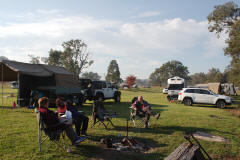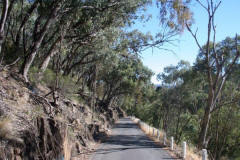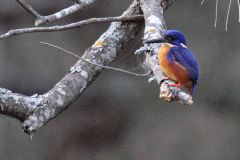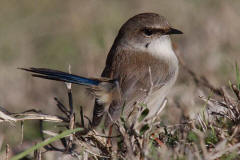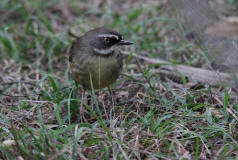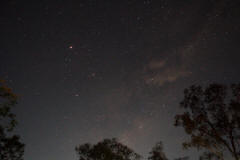|
The focus of the trip was to drive between Newcastle & Brisbane staying off the highways by using mostly country secondary roads, dirt roads or 4wd tracks & bush camping on private property, reserves, state forests, national parks or showgrounds with a three week time frame. There was no set itinerary as we like the freedom when getting into a campsite & if we like it, we can then stay a couple of days. On the majority of days we were on the road driving by nine & then set up no later than three in the afternoon after exploring for the day. It is not unusual for us to set up the next evenings campsite only fifty kilometres away. Our camper trailer comes with us wherever we go. On this trip we set a new record for not unhitching of one month & one day. A general route was planned using GoogleEarth, whereis.com & Hema digital maps with potential campsites noted using the Camps Australia Wide book, WikiCamps app, the FindACamp.com.au website & researched more if need be in Google. We also find the Cartoscope Touring Map series a great reference for sightseeing along the way. While the Hema Navigator HN5i shows us were we are on the moving topographical digital maps while driving, especially on the 4wd tracks, we still plan daily routes each evening using our Hema Road Atlas or the Reader Digest's Complete Driver's Atlas and Touring Guide to Australia. After Lindsay & Robyn set the date for the Australian CamperTrailers Group get together for Atkinsons Dam near Brisbane in June, Carol & I decided to arrange a members weekend at Camp Cobark so we could meet up with Ray & Sheree and Ken & Joy who would be our travelling companions for the next four weeks. Keith would accompany us for the first week, while Ian & Collette would meet us from Tenterfield at the start of the third week as we got closer to Atkinsons Dam.
From the Camp Cobark weekend meet we headed up the steep ascent of Thunderbolts Way onto the Great Dividing Range where we stopped for morning tea at Carsons Lookout with a view westward towards Barrington Tops. Not far from Nowendoc we turned off & made our way
down the fire trail into Nowendoc National Park. Jacky Barkers campsite
is on a creek of the same name & next to the rustic Wrights Hut, the
oldest surviving structure in the park. It was built in the early 1960ís
from materials recycled from the older Watts & Schultzís slab huts
located nearby. The park contains around 14,000 hectares of the
declared Curracabundi Wilderness Area. The deep V-shaped gorge is formed
by the Myall Creek which runs through the middle of the park. Both
subtropical & dry rainforest are confined to the narrow sheltered
gullies dominated by figs, giant stinging trees, river oaks, myrtles,
Sydney Blue Gum & Rough-barked Apple, while New England Blackbutt cover
the higher ridges.
The next morning we headed for Tamworth via the Port Stephens Cutting. This narrow winding road drops 700 metres off the range & was the route used in the early years to bring stock & produce down from the highlands to Port Stephens on the coast. The Australian Agricultural Company developed the section of road to make a shorter route between their Peel Estate & the headquarters at Carrington in Port Stephens. From Tamworth we drove along the Fossickers Way to Manilla & up to the top of Mount Borah for some fantastic views. The world renowned paragliding launch site stands around 500 metres above the surrounds. Access to Mount Borah is on private property & permission should be asked from Godfrey Wenness at the Manilla Paragliding School before entering.
From Mount Borah it was a scenic drive to Warrabah National Park on the Namoi River covering an area of 4000 ha & bisected by the Namoi River for 14 kilometres. Weathering & erosion of the coarse granites with incursions of basalt has resulted in spectacular rock formations. The Namoi River is lined with river oaks, river red gum, tea tree & bottlebrush while on the higher hills grow black & white cyprus, Caley's ironbark & hill red gum. Over one hundred species of birds have been recorded. Owing to the drought the river level was low with not much water flowing. In 1917 an old Beaumont-Adams .50 calibre double-action five shot percussion revolver was found in poor condition inside a hollow log with nail hole markings "THUNDERBOLT 1865" clearly readable. With a cold morning start & the thermometer showing zero, we found the handpump would not pull water from the camper trailer water tank as the pipe was frozen. Luckily we could open the top of the Safari Can to fill the kettle for a morning cup of tea on the campfire. It was suggested we could warm our hands in the Engel fridge which was set to 3 degrees.
It was a scenic 80 kilometre drive along country dirt
roads through farmland to Uralla where we caught up on some clothes
washing at the laundromat & also a stop at the supermarket. Top
temperature for the day was seven degrees with the wind chilling to the
bone. Yarrowyck Crossing on Thunderbolts Way towards Inverell offered a campsite & warm fire for the night on the banks of the Gwydir River. We placed the camper & Jeep in a position to block the cold wind from the campfire & luckily it dropped at dark. This was the last campfire with Keith as he leaves us to head home.
page2 page3 page4 page5 page6 page7 |
|||||||||||||||||||||||||||||||||||||||||||||||||||||||||



